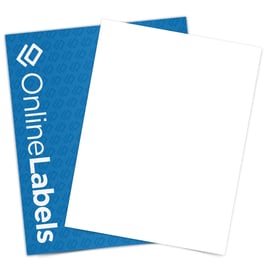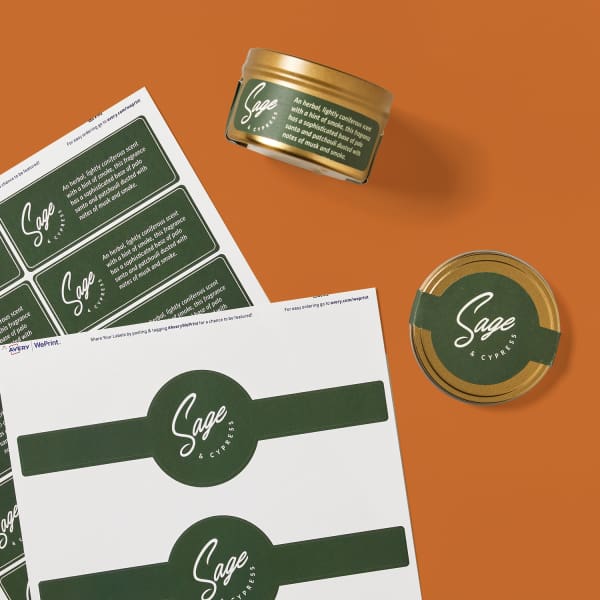Recognizing Exactly How Blank Labels Work to Improve Your Labeling Experience
Recognizing the auto mechanics of blank labels is crucial for maximizing your labeling practices across numerous contexts. To fully realize how these labels can change your processes, one must think about the various types readily available and the myriad means they can be personalized to suit particular demands.

Benefits of Utilizing Blank Labels
Blank labels offer a functional solution for various labeling requirements, making them vital in both individual and professional setups. Their adaptability permits customers to develop customized labels customized to certain demands, enhancing organizational effectiveness. Whether used in office, retail settings, or industrial applications, blank labels promote the identification and classification of items, documents, and personal things.
One considerable advantage of blank labels is their cost-effectiveness. By permitting customers to publish only the labels they require, waste is decreased, and supply monitoring comes to be much more manageable. Additionally, blank labels work with various printing approaches, consisting of inkjet and laser printers, making them obtainable for different users.

Furthermore, using blank labels simplifies the procedure of upgrading info, as users can easily publish new labels to change out-of-date ones, guaranteeing that all items and records are properly classified. In general, blank labels give a useful and reliable labeling solution for diverse applications.
Types of Blank Labels Available
What choices are available when it comes to blank labels? Blank labels come in a variety of types, each fit for different applications and choices.
One more preferred alternative is synthetic labels, often made from materials like polyester or vinyl. These labels are recognized for their durability and resistance to water, chemicals, and tearing, making them suitable for rough atmospheres. They are commonly used in commercial settings or for labeling products that may be exposed to dampness.
Furthermore, there are thermal transfer labels, which need a printer that uses heat to move ink onto the label surface. These labels are favored for their high-quality print and durability.
Finally, specialized labels deal with particular requirements, such as removable labels for short-lived usage or high-temperature labels for extreme problems. Understanding these alternatives allows users to pick the most appropriate blank label for their one-of-a-kind labeling demands.
Personalization Options for Labels
A vast range of personalization options is readily available for labels, enabling customers to customize them to particular demands and branding requirements. Users site here can choose from various dimensions, forms, and materials to make sure that the labels efficiently fit Read Full Article their intended purpose. Common materials include paper, polyester, and plastic, each supplying various degrees of durability and aesthetic appeal.
Shade options play an important role in customization, making it possible for brand names to preserve consistency with their company identity. Users can select from a range of shades or also select custom-made printing to match details branding aspects. Furthermore, labels can be published with distinct designs, logo designs, and text, boosting brand name recognition and visual influence.
Another crucial element is the option of adhesive. Labels can be made with permanent, detachable, or repositionable adhesives, relying on the application needs. This flexibility permits reliable labeling options throughout different settings, from retail to industrial setups.

Tips for Effective Labeling
Efficient labeling surpasses personalization; it also involves calculated factors to consider that enhance functionality and communication. To attain efficient labeling, begin by plainly specifying the function of each label. Consider the info that requires to be conveyed and guarantee it exists in an uncomplicated fashion. Making use of concise language and avoiding jargon can considerably improve understanding.
Next, prioritize exposure by selecting appropriate shades and font styles. High comparison in between text and history boosts readability, while bigger fonts help with fast identification. Additionally, guarantee that labels are positioned in a consistent and rational fashion, making it easier for customers to locate and analyze details.
Consider the sturdiness of labels. Select products matched for the certain environment where the labels will be made use of, whether it be indoors or outdoors. Waterproof or tear-resistant alternatives might be necessary depending upon the context.
Lastly, consistently review and upgrade your labels to mirror any changes in info or use. This positive technique not just keeps clearness yet also avoids confusion find out here now with time. By following these suggestions, you can take full advantage of the performance of your labeling efforts, guaranteeing they serve their intended function effectively.
Applications of Blank Labels
Blank labels use countless applications throughout numerous sectors, making them a very useful device for organization and interaction. These flexible labels are typically utilized in warehouses for stock management, permitting businesses to quickly determine and track products. By using blank labels to storage space bins, shelves, or pallets, firms can simplify their operations and lower the possibility of mistakes.
In the health care industry, blank labels play a vital duty in labeling medications and clinical supplies, guaranteeing proper identification and use. Customizable labels can include essential info such as dosage, expiry dates, and individual details, enhancing safety and conformity.
In retail, blank labels aid in prices items, providing promotions, or identifying rack locations, which ultimately improves the customer experience. They enable quick updates to pricing or item info without the demand for pre-printed labels.
Furthermore, blank labels are valuable for personal use, such as organizing home offices, crafting, or labeling food containers. Their flexibility enables individuals to develop tailored solutions that fulfill details needs. Overall, the applications of blank labels are extensive, highlighting their significance in promoting effectiveness and quality in various settings.
Conclusion
To conclude, blank labels provide a flexible and efficient service for various labeling requirements. Their versatility in dimension, shape, and product permits customized applications throughout different atmospheres. By leveraging personalization options and reliable labeling methods, organizations can enhance clearness and interaction (Blank Labels). Ultimately, the integration of blank labels into operational processes adds to enhanced performance, making them a very useful resource for both personal and professional use.